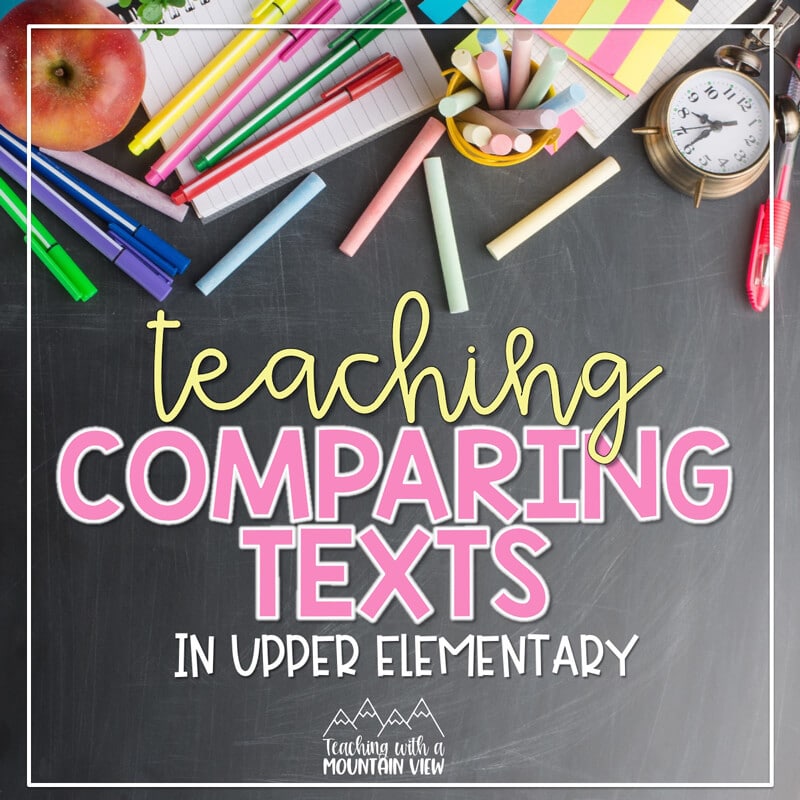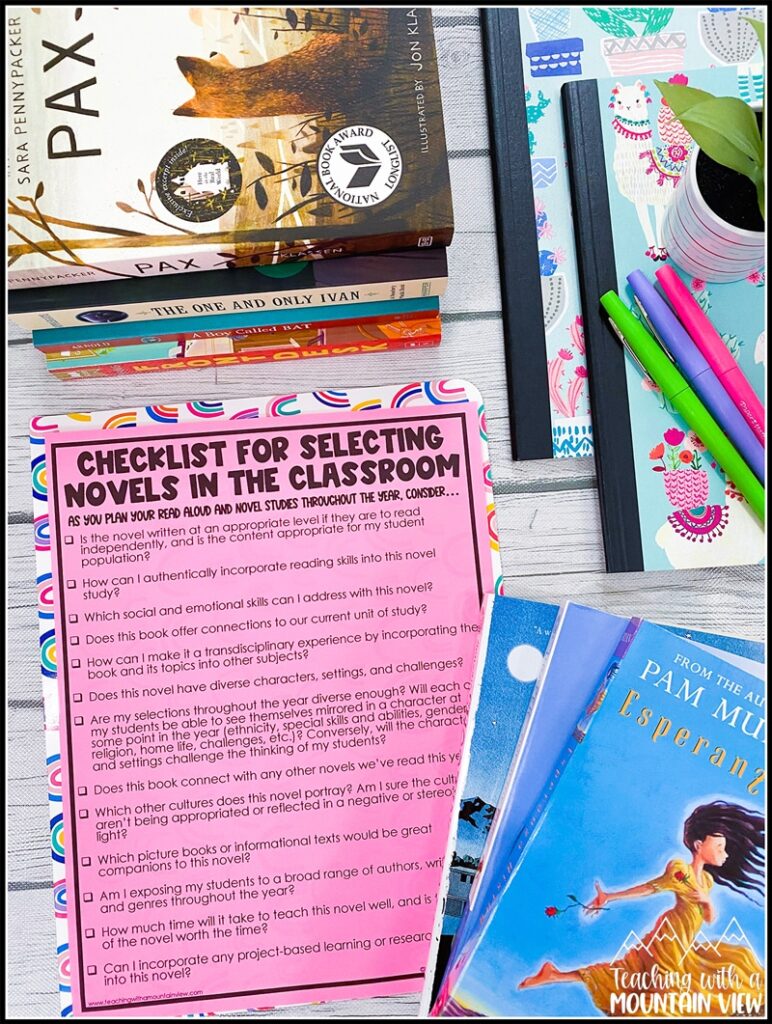3rd Grade Novel Study Books
By Mary Montero
Share This Post:
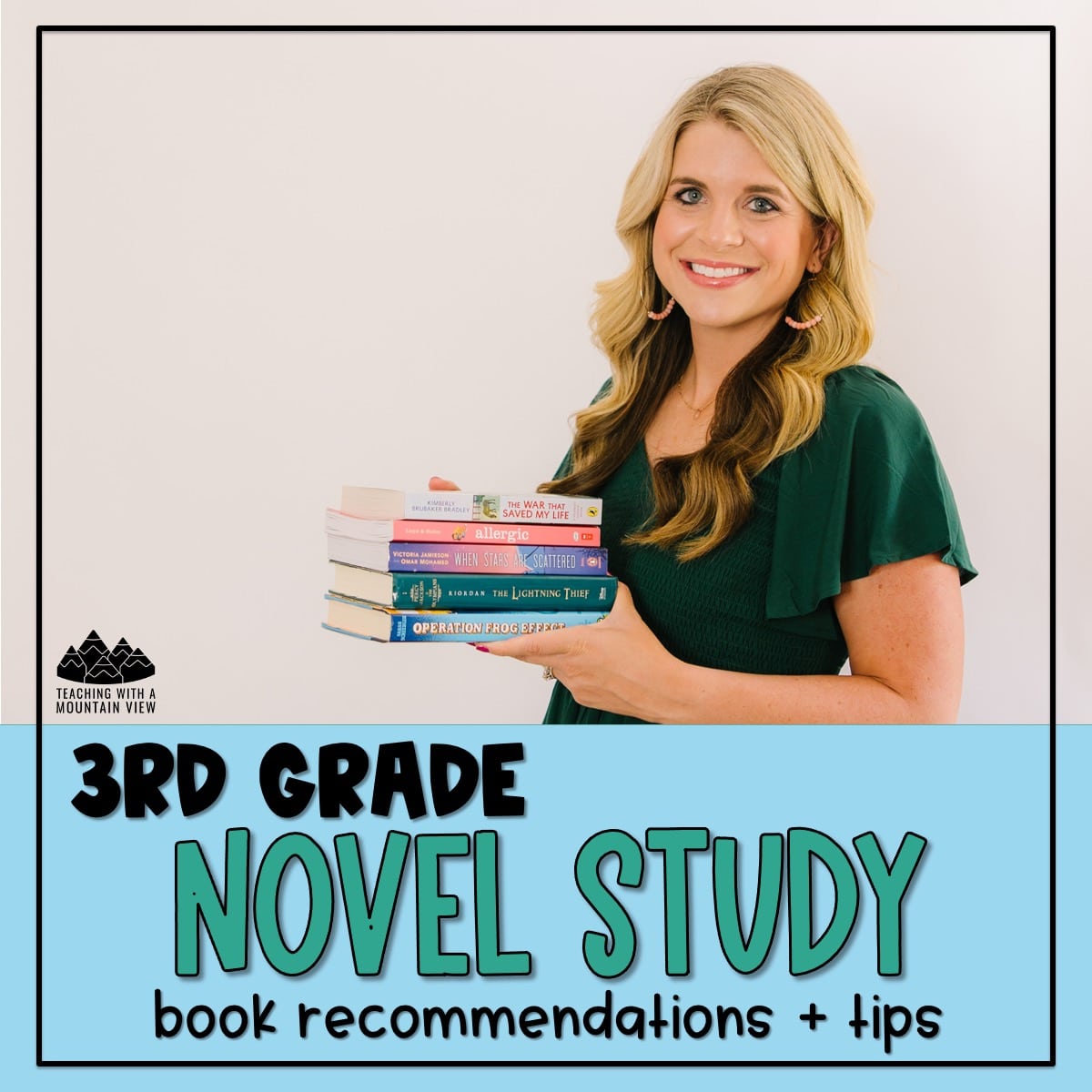
Most teachers have a passion for stockpiling at least two things: school supplies and books! I cannot resist browsing new books for read alouds, mentor texts, and novel studies. Of the three, novel studies can be the trickiest to plan. From selecting the right book to facilitating discussions and accountability, here’s my process for creating successful novel study units that engage and inspire students. I’ll also share my favorite 3rd grade novel study books (and be sure to follow for upcoming 4th grade and 5th grade book recommendations!).
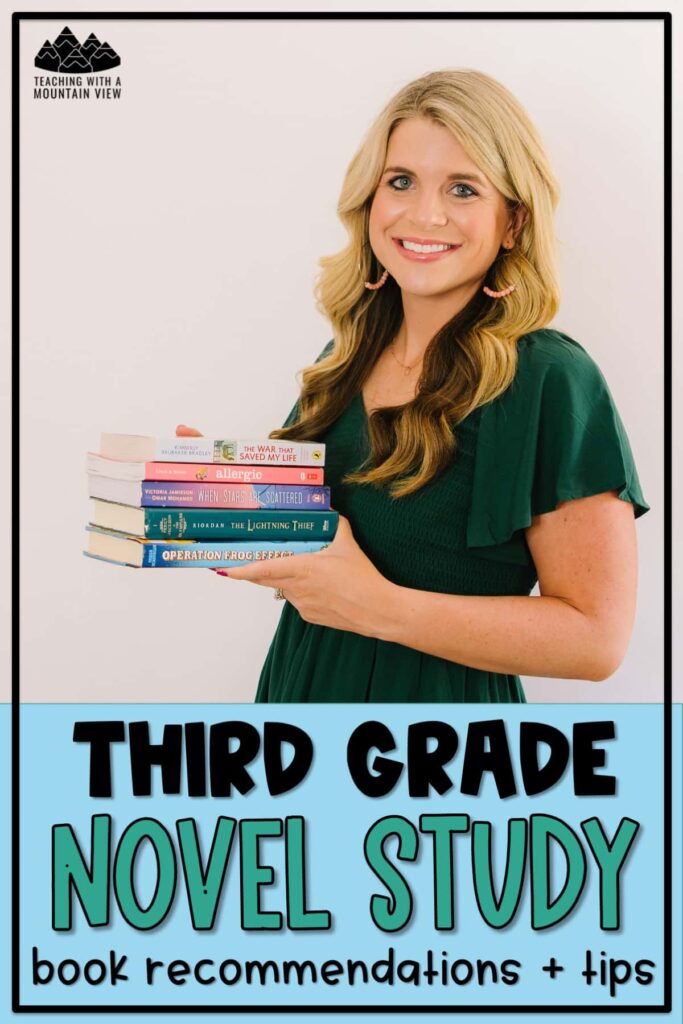
Novel Study Benefits
Novel studies require a deep exploration of text, as well as a level of indepence from your upper elementary readers. While I guide students through an in-depth analysis of the themes, characters, and literary devices used in the book, I also create time for them to work independently and in groups. Students must learn to manage their time, monitor their own comprehension, and collaborate.
In addition to reading skills, novel studies also promote critical thinking and analytical skills as students develop a deeper understanding of literature. Carefully-selected novel study activities can enhance students’ writing skills too!
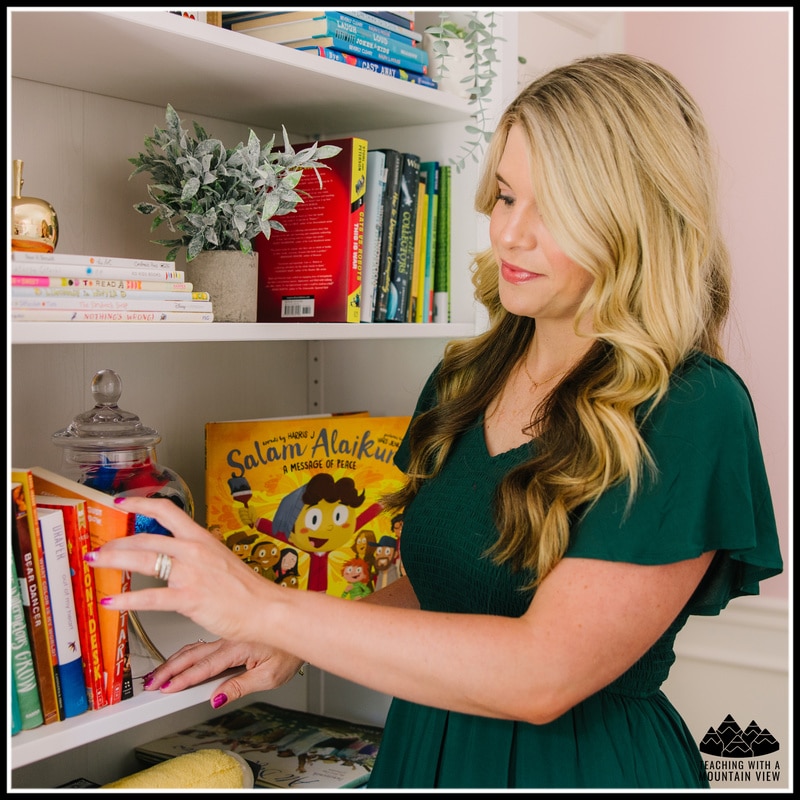
How To Hold Students Accountable During Novel Studies
When I first started using novel studies, I was nervous about student accountability and growth. If we weren’t reading together, how could I ensure students were, in fact, reading? If we didn’t touch base every day, how would I monitor progress and comprehension? If I wasn’t using a textbook or specific curriculum, would novel studies meet my standards?
Fortunately, I didn’t really need to worry about any of that. With lots of modeling and practice (along with the right resources!), my students THRIVE with novel studies.
Novel Study Resources
To help with accountability and standards, I created open-ended activities that work with almost ANY upper elementary novel. Here are some great choices!
- Pre-Reading Task Cards
- Complete Novel Study Bundle
- Free Novel Projects
- Free Differentiated Novel Choice Boards
- Free Writing and Vocabulary Novel Choice Boards
- This blog post is full of reading response activities
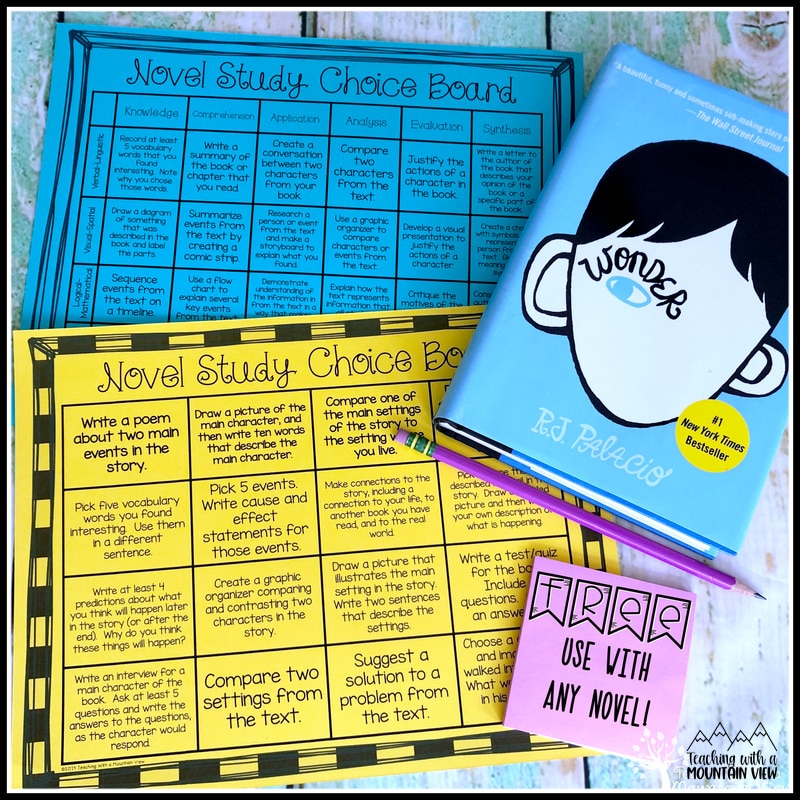
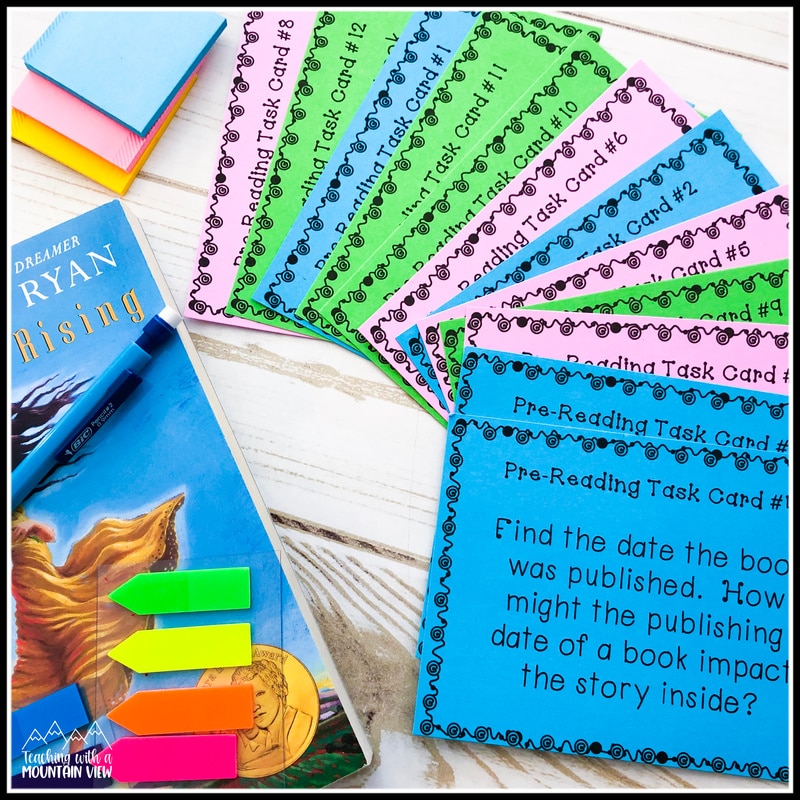
Close reading and annotating can be another way to support reading comprehension during novel studies. This post is a helpful place to start when teaching annotation.
More Novel Study Teacher Tips
Teachers in our FREE Inspired in Upper Elementary Facebook group also shared how they hold students accountable and meet standards during novel studies. Here’s what some of them said!
“I make my own novel studies and hit the standards as I move through the book. We talk about story elements at the beginning, then explore problems and solutions, summary, supporting answers with evidence, main idea, and theme. We spiral back throughout the book to explore how these things can change as the story develops. I also scatter some smaller things throughout like figurative language, prefixes and suffixes, using a dictionary, and context clues. Each section assigned has a vocabulary component, and 3 short response questions that connect to comprehension and standards. Every other assignment students are asked to summarize the events.” – Camille
“With novel studies, I always cover the basics such as characters (descriptions, development), setting, problem, solution, point of view, sequencing, theme, and vocabulary. You can teach all kinds of context clues throughout the text. Sometimes I have words I know they need to learn, but it’s also student driven as they get to pick words they don’t know and we use context clues skills to figure it out. Absolutely you can select sections to reread for a specific purpose. One thing I felt like I was lacking this year ended up being basic summarizing, so for our last quarter literature circles I started “matchbook summaries”, which I found the idea somewhere online. I love novel studies and literature circles, but my main problem this year is feeingl like we’re constantly rushing, and I really just need to slow down and make sure we interact with the text more, not just read, talk, and move on, which is what ended up happening in most cases.
Another challenge I have is once we read that last word of the last chapter, the kids think we are “done”. But, there are a lot of post reading and rereading activities you can and should do. That’s the best place to teach theme, character development, etc, and do some reading response type written questions, plot, sequence, etc.” – Farrah
“After every chapter, students are asked to do some response: answer comprehension questions, make connections, draw, etc. I also incorporate vocabulary. Since most of the novels I teach are historical fiction, there is a LOT of history in my curriculum as well.” – Sarah
How to Select Upper Elementary Books for Novel Studies
Offering a variety of appropriate book choices is another key element for running successful novel studies. This post has my best tips for selecting novels in upper elementary.
Must-Read 3rd Grade Novel Study Books
These are some of my favorite 3rd grade novel study books that are sure to be a hit with your students too. You can see them all here on Amazon for easy browsing (Amazon affiliate link). Please preview the content of each book to make sure it is a good fit for your child and family.
- The One and Only Ivan
- Ramona Quimby, Age 8
- The Mouse and the Motorcycle
- Stone Fox
- Wayside School is Falling Down
- The Miraculous Journey of Edward Tulane
- Nancy Drew
- The Tale of Despereaux
- The Great Brain
- The Invention of Hugo Cabret
- The Cricket in Times Square
- The Book Wanderers
- Love That Dog
- The Land of Stories
- Lemonade War
- The Wild Robot*
Even More Book Recommendations
If you loved these 3rd grade novel study books, enter your email below for more book lists and activity ideas sent straight to your inbox!
Mary Montero
I’m so glad you are here. I’m a current gifted and talented teacher in a small town in Colorado, and I’ve been in education since 2009. My passion (other than my family and cookies) is for making teachers’ lives easier and classrooms more engaging.







